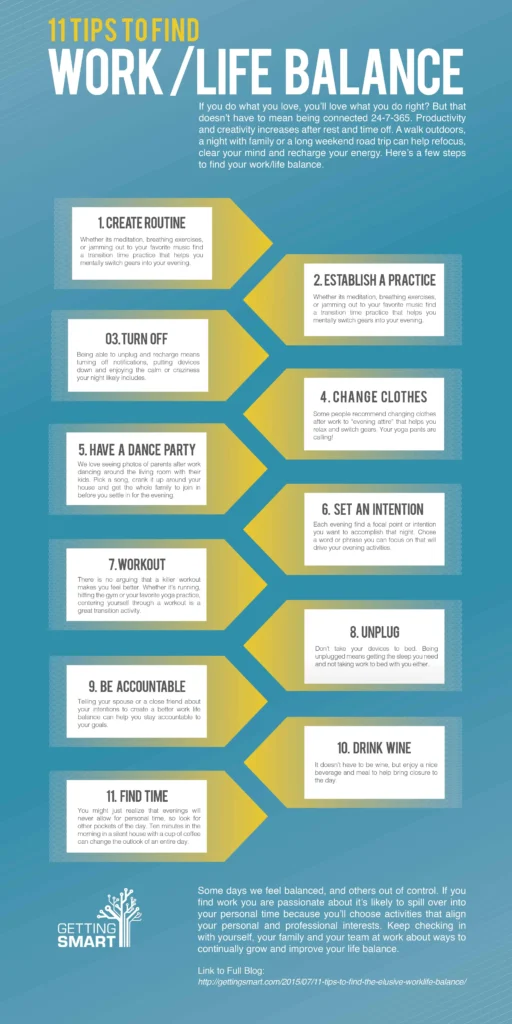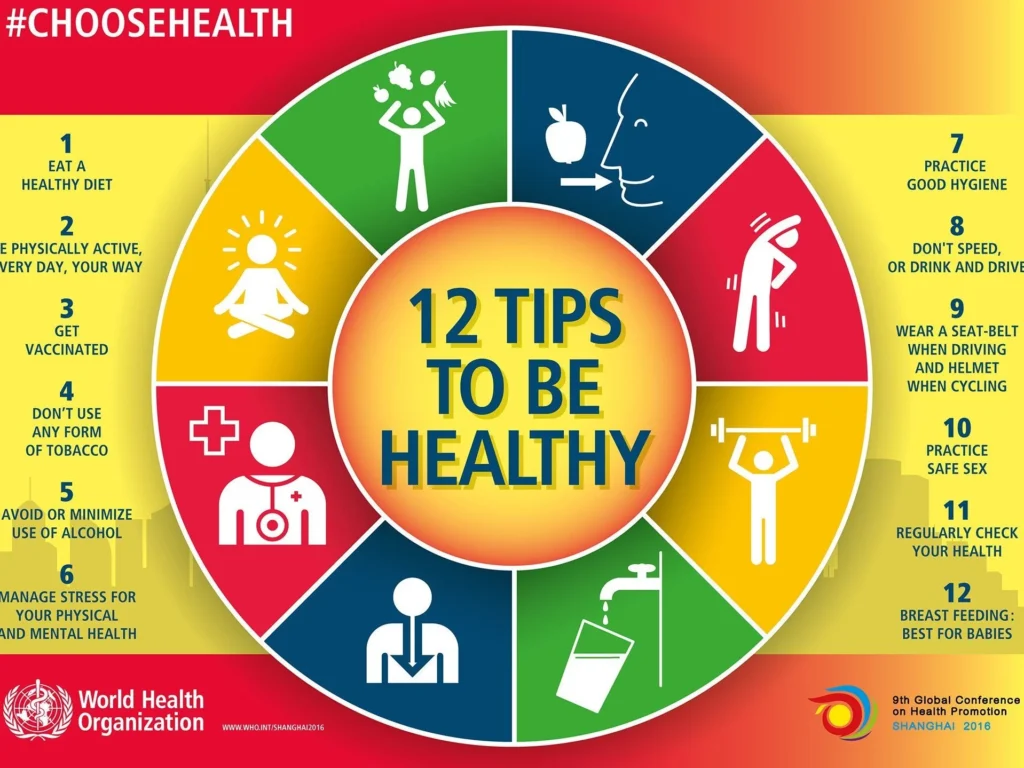Maintaining a healthy work-life balance is essential for overall well-being. It involves managing your time and energy effectively to ensure that both your professional and personal lives are fulfilling and satisfying. It is important to prioritize self-care, set boundaries, and establish clear communication with your colleagues and loved ones. By finding a balance between work and leisure activities, you can reduce stress, improve productivity, and enhance your relationships.
Achieving a healthy work-life balance is a common concern for many individuals in today’s fast-paced society. People often wonder how to juggle the demands of their careers with their personal lives without feeling overwhelmed or burnt out. They may be curious about strategies for delegating tasks, setting realistic goals, and learning to say no when necessary. Additionally, they may be interested in exploring ways to incorporate mindfulness practices and hobbies into their daily routines to promote relaxation and enjoyment. By implementing these techniques, individuals can create a more harmonious and fulfilling lifestyle.
1. Understanding Work-Life Balance
Work-life balance refers to the equilibrium between the time and effort allocated to work and personal life. It is essential for maintaining a healthy and fulfilling lifestyle, as it allows individuals to prioritize their well-being and happiness alongside their professional responsibilities. Achieving a healthy work-life balance involves managing time effectively, setting boundaries, and making conscious choices to allocate time to both work and personal life.
When individuals have a healthy work-life balance, they are able to prevent burnout, reduce stress, and maintain better physical and mental health. This balance also enables them to foster strong relationships with family and friends, pursue personal interests, and engage in activities that bring them joy and fulfillment outside of work.
2. Setting Boundaries
Setting boundaries is crucial for maintaining a healthy work-life balance. This involves clearly defining the hours dedicated to work and establishing limits on the intrusion of work into personal time. It also means learning to say no to excessive work demands that can encroach on personal time and lead to burnout.
Additionally, setting boundaries includes creating a designated workspace at home if working remotely, and communicating with colleagues and supervisors about availability during non-work hours. By setting clear boundaries, individuals can create a separation between work and personal life, allowing them to fully engage in both areas without feeling overwhelmed or stressed.
3. Time Management
Effective time management is essential for achieving a healthy work-life balance. This involves prioritizing tasks, setting realistic goals, and allocating time for both work and personal activities. Utilizing tools such as calendars, to-do lists, and time-tracking apps can help individuals organize their schedules and make the most of their time.
By managing time efficiently, individuals can avoid overworking, reduce procrastination, and create space for leisure, hobbies, and relaxation. This, in turn, contributes to improved overall well-being and a more balanced lifestyle.
4. Prioritizing Self-Care
Self-care is a fundamental component of maintaining a healthy work-life balance. It encompasses activities and practices that promote physical, mental, and emotional well-being, such as exercise, meditation, adequate sleep, and hobbies. Prioritizing self-care allows individuals to recharge and rejuvenate, ultimately enhancing their ability to perform well in both professional and personal realms.
By recognizing the importance of self-care and integrating it into their regular routines, individuals can mitigate the negative effects of stress, prevent burnout, and sustain a more balanced and fulfilling lifestyle.
5. Flexibility and Adaptability
Flexibility and adaptability are key traits for maintaining a healthy work-life balance, especially in today’s dynamic work environments. Being open to adjusting schedules, embracing remote work options, and accommodating unforeseen changes can help individuals navigate the demands of work while also tending to personal needs and priorities.
Embracing flexibility allows individuals to better manage their time, reduce stress associated with rigid schedules, and create space for personal pursuits and family obligations. It also enables them to approach work and personal life with a more adaptable and resilient mindset.
6. Effective Communication
Effective communication is essential for establishing and maintaining a healthy work-life balance. This includes clearly expressing one’s needs, boundaries, and expectations to colleagues, supervisors, and family members. By communicating openly about work commitments, availability, and personal priorities, individuals can reduce misunderstandings and conflicts that may arise from conflicting demands.
Additionally, effective communication involves being proactive in addressing work-related issues that may impact personal time, as well as seeking support from colleagues and supervisors when necessary. Clear and open communication fosters understanding and cooperation, ultimately contributing to a more harmonious integration of work and personal life.
7. Boundaries Between Work and Personal Life
Establishing boundaries between work and personal life is essential for maintaining a healthy balance. This can involve creating designated work hours and spaces, as well as consciously disconnecting from work-related communication and tasks during personal time. By delineating clear boundaries, individuals can prevent work from encroaching on their personal lives and maintain a sense of autonomy and relaxation outside of work.
Furthermore, setting boundaries between work and personal life allows individuals to fully engage in personal relationships, leisure activities, and self-care without the interference of work-related stressors. This separation contributes to overall well-being and prevents the potential negative impact of excessive work on personal life.
8. Time for Personal Relationships
Dedicating time to nurturing personal relationships is an integral part of achieving a healthy work-life balance. This involves prioritizing quality time with family, friends, and loved ones, and actively participating in meaningful interactions and activities outside of work. By fostering strong personal relationships, individuals can experience greater support, fulfillment, and connection in their personal lives.
Allocating time for personal relationships also contributes to emotional well-being and provides a sense of balance and perspective outside of work. It allows individuals to cultivate meaningful connections and experiences that enrich their lives beyond the professional sphere.
9. Boundaries with Technology
Establishing boundaries with technology is essential for maintaining a healthy work-life balance in today’s digitally connected world. This includes setting limits on screen time, managing notifications and email access during non-work hours, and creating tech-free zones in the home for relaxation and personal time. By consciously managing technology use, individuals can prevent the intrusion of work-related stressors and maintain a healthier relationship with digital devices.
Additionally, setting boundaries with technology allows individuals to be more present and engaged in personal activities and relationships, reducing the distractions and potential negative impacts of constant connectivity. By prioritizing tech-free time, individuals can achieve a better balance between their professional and personal lives.
10. Seeking Support and Resources
Seeking support and utilizing resources can be instrumental in maintaining a healthy work-life balance. This may involve reaching out to colleagues, supervisors, or HR professionals for assistance in managing workload and responsibilities. It can also include accessing employee assistance programs, wellness resources, and professional development opportunities that support overall well-being and work-life integration.
Furthermore, seeking support from family, friends, or mental health professionals can provide valuable guidance and encouragement in navigating the challenges of balancing work and personal life. By proactively seeking support and leveraging available resources, individuals can cultivate a network of support that contributes to their overall well-being and success in maintaining a healthy work-life balance.
| Tip | Explanation |
|---|---|
| Set Boundaries | Clearly define and communicate your work hours and personal time to avoid overworking. |
| Prioritize Self-Care | Make time for activities that rejuvenate you, such as exercise, hobbies, or spending time with loved ones. |
| Manage Time Wisely | Use time management techniques to increase productivity and create more free time. |
| Unplug | Take regular breaks from technology to disconnect from work and focus on personal life. |
| Seek Support | Reach out to colleagues, friends, or family for help and support when feeling overwhelmed. |
Maintaining a healthy work-life balance involves setting boundaries, prioritizing self-care, managing time wisely, unplugging from work, and seeking support when needed.




